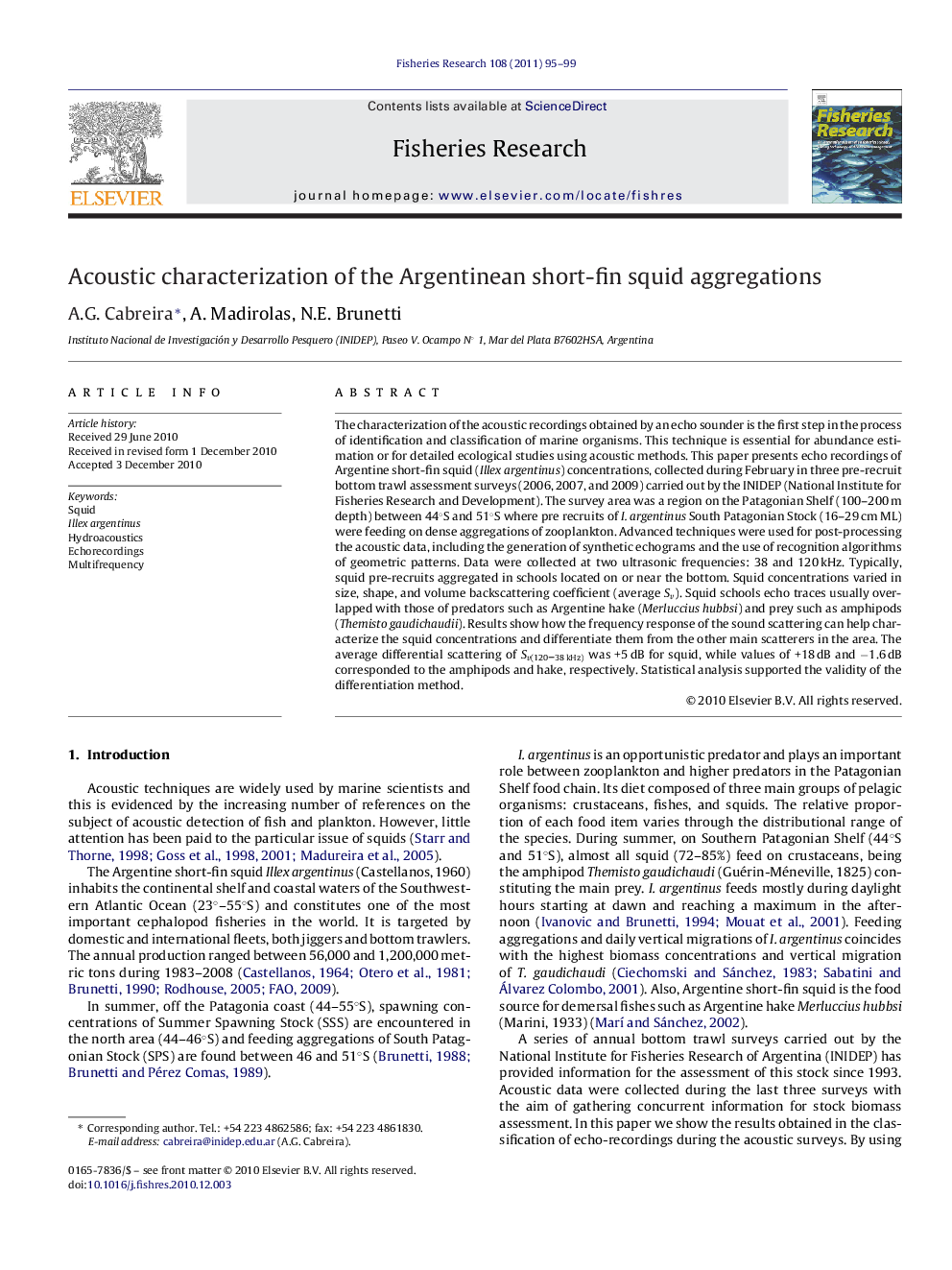| Article ID | Journal | Published Year | Pages | File Type |
|---|---|---|---|---|
| 4543720 | Fisheries Research | 2011 | 5 Pages |
The characterization of the acoustic recordings obtained by an echo sounder is the first step in the process of identification and classification of marine organisms. This technique is essential for abundance estimation or for detailed ecological studies using acoustic methods. This paper presents echo recordings of Argentine short-fin squid (Illex argentinus) concentrations, collected during February in three pre-recruit bottom trawl assessment surveys (2006, 2007, and 2009) carried out by the INIDEP (National Institute for Fisheries Research and Development). The survey area was a region on the Patagonian Shelf (100–200 m depth) between 44°S and 51°S where pre recruits of I. argentinus South Patagonian Stock (16–29 cm ML) were feeding on dense aggregations of zooplankton. Advanced techniques were used for post-processing the acoustic data, including the generation of synthetic echograms and the use of recognition algorithms of geometric patterns. Data were collected at two ultrasonic frequencies: 38 and 120 kHz. Typically, squid pre-recruits aggregated in schools located on or near the bottom. Squid concentrations varied in size, shape, and volume backscattering coefficient (average SvSv). Squid schools echo traces usually overlapped with those of predators such as Argentine hake (Merluccius hubbsi) and prey such as amphipods (Themisto gaudichaudii ). Results show how the frequency response of the sound scattering can help characterize the squid concentrations and differentiate them from the other main scatterers in the area. The average differential scattering of Sv(120–38 kHz)Sv(120–38 kHz) was +5 dB for squid, while values of +18 dB and −1.6 dB corresponded to the amphipods and hake, respectively. Statistical analysis supported the validity of the differentiation method.
